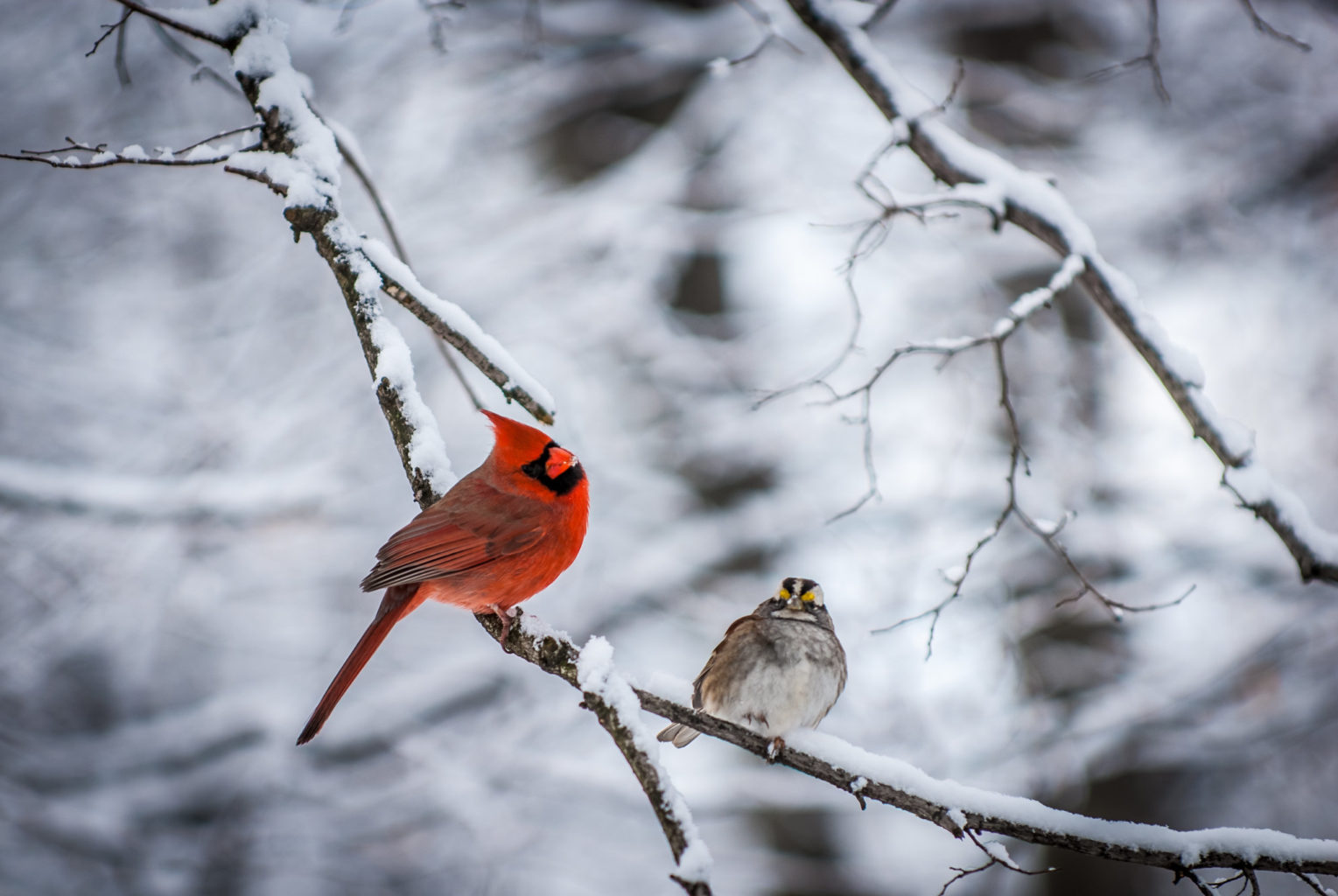59th Annual Plainfield Christmas Bird Count – The Results!

Pouring rain, icy roads, and thick fog tested the endurance and commitment of the 45 birders who joined this year’s Plainfield Christmas Bird Count. Despite the foul weather, birders managed to turn up 4,079 birds of 39 species at feeders and forests of Middlesex, Marshfield, Barre, and everything in between.
While Saturday’s list came in seven species shy of last year’s CBC, the total number of birds spotted this year was only a few dozen less than in 2018, when the weather was perfectly sunny and warm.
Noticeably absent from this year’s count was the usual complement of winter visitors from the north. Common Redpolls, Pine Grosbeaks, White-winged Crossbills, and Bohemian Waxwings went untallied, while Cedar Waxwings, Purple Finches, and Pine Siskins were each only sighted once across the entire fifteen-mile-diameter count circle.
In terms of highlights, this was The Year of the Crow. Birders spotted 938 American Crows, more than double the numbers tallied during the previous three years. Yet most of these records were concentrated in two locations: A freshly-manured farm field in East Montpelier accounted for nearly 200 crows, while a flyover of a single flock (or a murder, shall we say) in Barre accounted for 350 more. Though crows roost in huge, communal groups each night during the winter, Saturday’s gloomy, low-visibility conditions may have caused many crows to convene earlier in the evening than usual.
Nathaniel Sharp and Richard Littauer managed to summit a very icy Spruce Mountain to find a group of 9 Red Crossbills, a species only recorded twice in the last five counts.
Peter and Cathy James and Chip Darmstadt had the good fortune of watching a Peregrine Falcon preening in a Barre neighborhood– the first Peregrine sighting in over ten years of the Plainfield count.
Janet Steward’s 55th consecutive Plainfield CBC (!) may have yielded among the lowest totals ever for her traditional sector, but she managed to score the only flock of Pine Siskins for the count day.
A 4 am alarm sprang Ken Benton out of bed and into the driver’s seat for an early morning of owling in East Montpelier, which yielded the Plainfield CBC’s first-ever Great Horned Owl. Though common in the Champlain Valley, Great Horned Owls have always been scarce in Central Vermont’s colder, snowier, and smaller farmlands.
Though the wet weather certainly impacted birding conditions and bird population distributions, many birders have noticed a steady decline in bird feeding activity. Though it’s tough to tell from CBC data whether there are really fewer birds visiting feeders, there does seem to be fewer and fewer feeders maintained by residents in our area.
While residents in “bear country” should wait until winter sets in before filling the feeders, many studies confirm that bird feeding is not harmful to the birds, nor does birdseed make up the majority of a feeder bird’s winter diet. As long as feeders are kept clean and regularly filled with fresh seed, we encourage residents to fill those feeders and partake in one of North America’s most popular pastimes.
Finally, we are still in “count week” for another day. That means any species not recorded during the count day can be documented as a “count week” species if seen within three days before or after the count. Let us know if you come across these common species that we missed on count day: Ring-billed Gull, Herring Gull, Canada Goose, Red-tailed Hawk, American Black Duck, Sharp-shinned Hawk, and Coopers Hawk.
For more about the Christmas Bird Count, visit our CBC webpage.
*Featured Photo by Wayne Fawbush*

